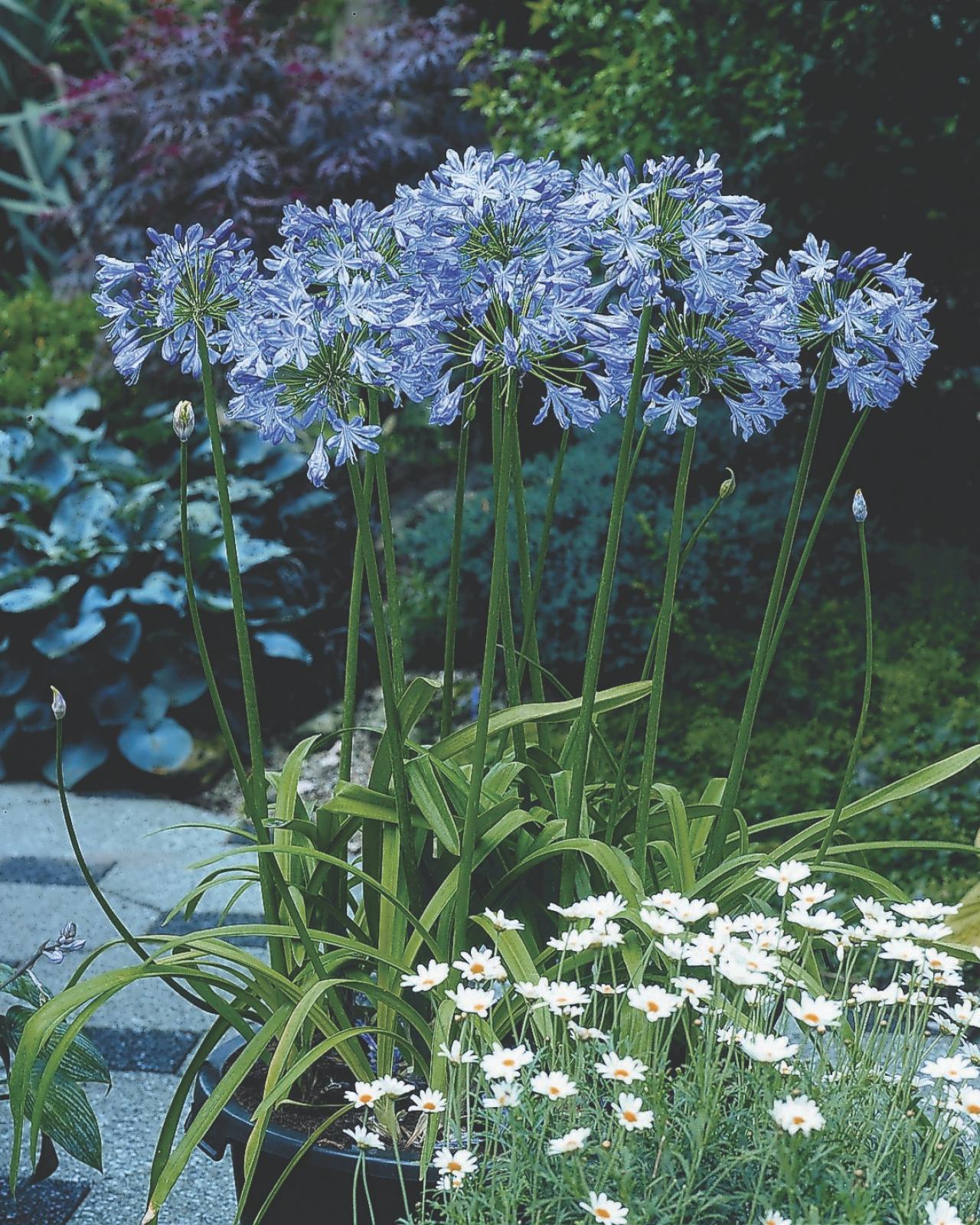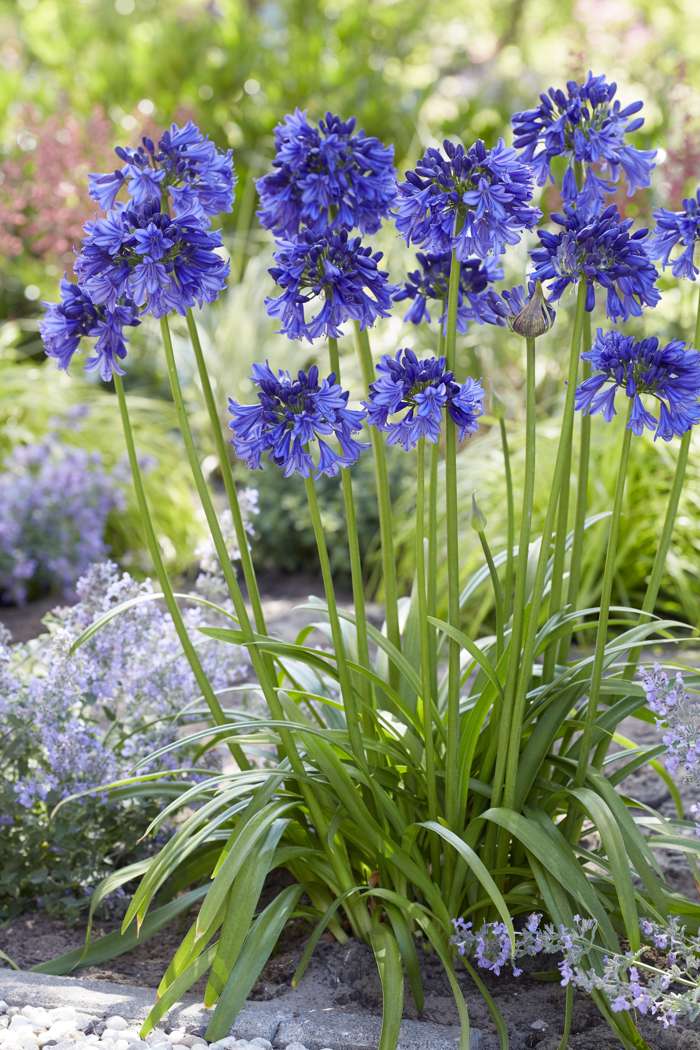Mastering the Art of Agapanthus Treatment: Important Actions for Healthy And Balanced Growth and Vivid Blooms
In the realm of horticulture, the cultivation of agapanthus stands as a fulfilling endeavor for those that seek to nurture these elegant blooming plants. With their striking blooms and stylish foliage, agapanthus has recorded the interest of gardeners worldwide. However, attaining ideal development and vivid blooms requires a nuanced technique that includes numerous vital steps. From choosing the appropriate selection to grasping trimming methods, the journey in the direction of cultivating flourishing agapanthus plants is diverse and holds the crucial to unlocking the complete possibility of these agricultural gems.

Selecting the Right Agapanthus Range

When selecting the appropriate Agapanthus range for your garden, think about variables such as climate viability, blossom color, and growth routine. Additionally, consider the environment in your region to guarantee the Agapanthus selection you pick can grow in your details conditions. Comprehending the growth habit of various Agapanthus ranges is critical for appropriate placement within your yard.
Perfect Growing Problems
Taking into consideration the ideal environmental requirements is necessary for effective Agapanthus growing. Agapanthus flourishes in well-draining soil with a somewhat acidic to neutral pH degree. When planting, pick a location that gets complete sunlight to partial color. In hotter climates, offering some afternoon shade can protect against scorching of the fallen leaves. Agapanthus plants are sensitive to cold temperatures and ought to be protected from frost throughout winter season months.
To ensure healthy and balanced growth and vivid blossoms, plant Agapanthus light bulbs at a deepness of regarding 2-4 inches and space them 8-12 inches apart. Adding organic issue, such as compost, to the dirt can improve water drainage and fertility, promoting durable origin growth. Mulching around the base of the plants helps keep wetness and suppresses weed growth. Normal watering is critical, especially throughout the expanding period, to maintain the dirt constantly moist however not waterlogged.
Watering and Feeding Tips
Maintaining correct dampness degrees and giving necessary nutrients are vital components in the care program for Agapanthus plants. When it comes to sprinkling Agapanthus, it is critical to strike an equilibrium. These plants prefer constantly damp soil however are prone to root rot if overwatered.
Feeding Agapanthus is necessary for advertising healthy development and prolific blossoms. Apply a well balanced fertilizer, such as a 10-10-10 formula, in the early spring as brand-new growth arises. Repeat this application every 6-8 weeks throughout the growing season. Avoid too much fertilization, as it can lead to rich foliage at the cost of blossoms. Constantly follow the manufacturer's guidelines for correct dilution and application approaches. By following these watering and feeding ideas, you can guarantee your Agapanthus plants prosper and produce dynamic, long-lasting flowers.
Trimming Techniques for Agapanthus
Trimming Agapanthus plants at the proper times and with proper methods is critical for keeping their health and wellness and promoting optimum development and blooming. The excellent time to trim Agapanthus is in late wintertime or very early springtime prior to new development emerges. Beginning by removing view publisher site any type of yellowing or dead fallen leaves near the base of the plant. Cut them as short as possible without harming the arising shoots.
For flowered stems, wait until the flowers have withered and after that cut them back to the base. This not only cleans up the plant's appearance yet also urges the advancement of new flower buds. Deadheading spent blossoms can likewise reroute the plant's energy right into creating more blossoms instead of establishing seeds. However, if you desire to accumulate seeds for propagation, leave some flowers to fully grown and completely dry on the plant.
Keep in mind to utilize clean, sharp tools to make specific cuts and lower the danger of presenting conditions. Agapanthus. Regular trimming will aid maintain your Agapanthus looking healthy and balanced and neat while making certain a bountiful display screen of attractive blooms
Taking Care Of Common Pests and Conditions
After guaranteeing appropriate trimming techniques for Agapanthus, it is necessary to deal with usual bugs and Resources diseases that can impact the wellness and vigor of these plants. One typical insect that influences Agapanthus is the Agapanthus gall midget.
Furthermore, Agapanthus plants can endure from origin rot if they are planted in poorly draining soil. By being watchful and taking punctual activity versus illness and insects, you can help your Agapanthus plants thrive and generate vibrant blossoms. Agapanthus.

Conclusion
Finally, understanding the art of agapanthus try this site treatment involves choosing the best range, offering perfect planting conditions, appropriate watering and fertilizing, suitable pruning methods, and attending to common pests and conditions. By complying with these necessary actions, you can guarantee healthy and balanced development and dynamic blossoms for your agapanthus plants. Remember to frequently monitor and keep your plants to promote their total well-being and durability.
To make sure healthy growth and lively blossoms, plant Agapanthus bulbs at a depth of regarding 2-4 inches and room them 8-12 inches apart. By complying with these watering and fertilizing tips, you can guarantee your Agapanthus plants flourish and produce vivid, durable blossoms.
One usual bug that affects Agapanthus is the Agapanthus gall midge. Additionally, Agapanthus plants can endure from origin rot if they are planted in improperly draining soil. By complying with these vital actions, you can ensure healthy and balanced growth and lively blossoms for your agapanthus plants.